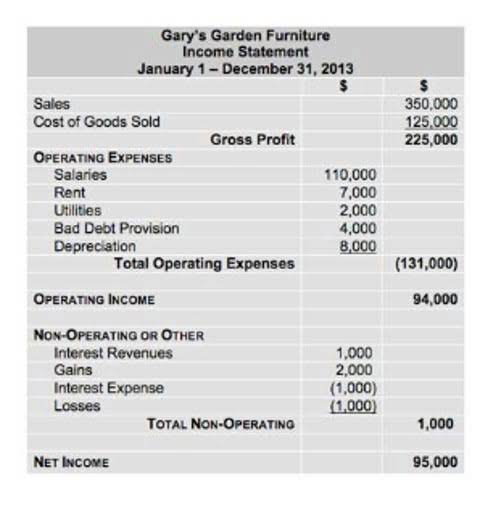
The ratio measures the ability of an organization to efficiently produce sales, and is typically used by third parties to evaluate the operations of a business. Ideally, a company with a high total asset turnover ratio can operate with fewer assets than a less efficient competitor, and so requires less debt and equity to operate. The asset turnover ratio, also known as the total asset turnover ratio, measures the efficiency with which a company uses its assets to produce sales. The asset turnover ratio formula is equal to net sales divided by the total or average assets of a company. A company with a high asset turnover ratio operates more efficiently as compared to competitors with a lower ratio. In the financial world, understanding a company’s efficiency in utilizing its assets is crucial for investors, analysts, and the company’s management.
Analysis
That’s why it’s important to compare asset turnover between companies in the same industry. In retail, a good asset turnover might be around 2.5, but investors in utility stocks generally shouldn’t expect an asset turnover ratio of more than 0.5. You may need to add up sales from each individual quarter from the past year, or the company may provide annual sales. Unfortunately, the normal balance information provided by the total asset turnover ratio isn’t always of equal value for every potential investment you may wish to explore. This formula provides a more accurate result by including only the net amount of an organization’s annual sales, after all refunds and returns have been removed from the total sales figure. The higher the ratio is, the more efficiently a company is generating sales from its asset base.

Premium Investing Services

Capital-intensive industries, such as manufacturing and telecommunications, will inherently exhibit lower asset turnover than less capital-intensive industries. Therefore, there is minimal value in comparing the ratio of firms in sectors that are vastly distinct. A high asset turnover ratio is above 1.5, indicating a company is generating substantial revenue relative to its asset base. It means the company is efficiently using Bookkeeping for Consultants its assets like property, equipment and inventory to produce sales.
Significance in Financial Performance
- For example, in industries with high turnover ratios, businesses must strive for competitive advantages to maintain profitability.
- Therefore, for every dollar in total assets, Company A generated $1.5565 in sales.
- For companies in the utilities industry, ratios are generally lower than companies in retail.
- Higher ratios usually allude to better performance and vice versa with lower ratios.
- Rohit Tech Company is a tech start-up company that manufactures a new tablet computer.
- This means that for every dollar invested in assets, ABC Corp generates $2 in sales.
For every dollar in assets, Walmart generated $2.62 in sales, while Target generated $1.88. Target’s turnover could indicate that the retail company was experiencing sluggish sales or holding obsolete inventory. Fixed assets such as property or equipment could be sitting idle or not being utilized to their full capacity. You don’t want to be judging yourself on a metric you set yourself—especially when it’s one that’s meant to help you improve your business. As we can see from the example above, asset turnover ratio with a value greater than 1 stands for high efficiency, because the value of the revenue is higher than the value of the assets used. Retailers, for instance, may experience high asset turnover during peak shopping seasons and lower turnover during off-peak times.

Due to the varying nature of different industries, it is most valuable when compared across companies within the same sector. The asset turnover ratio is expressed as a rational number that may be a whole number or may include a decimal. By dividing the number of days in the year by the asset turnover ratio, an investor can determine how many days it takes for the company to convert all of its assets into revenue.
How to Analyze Asset Turnover Ratio by Industry
Evaluating operational efficiency is pivotal in understanding a company’s ability to convert its assets into revenue. In the retail industry, for instance, a high TAT indicates that a business uses its assets efficiently to maximize sales. This ratio is often utilized to assess performance over time, enabling businesses to monitor enhancements in asset utilization and pinpoint areas that may require improvement. By analyzing TAT, investors can discern trends in efficiency and performance that may influence investment decisions. The asset turnover ratio measures how effectively a company uses its assets to generate revenues or sales. The ratio compares the dollar amount of sales or revenues to the company’s total assets to measure the efficiency of the company’s operations.

What are the Limitations of the Asset Turnover Ratio?

For instance, if the total turnover of a company is 1.0x, that would mean the company’s net sales are equivalent to the average total assets in the period. In other words, this company is generating $1.00 of sales for each dollar invested into all assets. The asset turnover ratio tends to be higher for companies in certain sectors than others. Retail and consumer staples, for example, have relatively small asset bases but have high sales volume; thus, they have the highest average asset turnover ratio. Conversely, firms in sectors such as utilities and real estate have large asset bases and low asset turnover. Asset turnover measures the value of a company’s revenues in relation to the value of its assets.
- A company’s asset turnover ratio can also vary depending on its growth stage, with startups often having a lower ratio as they invest in assets to support growth.
- Hence, we use the average total assets across the measured net sales period in order to align the timing between both metrics.
- To obtain a comprehensive analysis of a company’s financial performance, it is advisable to consider other financial ratios in conjunction with the asset turnover ratio.
- Transitioning from what this ratio represents, we delve deeper into its application, interpretation, and the caution required when comparing across diverse industry landscapes.
- Improving your inventory management can also help increase your asset turnover ratio, by reducing waste and ensuring that you have the right products in stock at the right time.
It could also point to an over-investment in assets that is not producing comparable revenue, which can drag down asset turnover ratio profitability. In some cases, an unusually high asset turnover ratio could indicate that a company is over-using its assets, which might result in wear and tear, increased maintenance costs, and potential breakdowns. To effectively interpret the Total Asset Turnover (TAT) ratio, one must not only compare it to previous periods for the same company, but also to relevant industry averages or to direct competitors. Comparisons like these can give valuable insight into a company’s efficiency relative to its peers.
Similar to cash flow, the asset turnover ratio compares the company’s total assets over the course of a year to its sales. In simpler terms, it shows the dollar amount the company is earning in sales compared to the dollar amount of its assets. The asset turnover ratio is a measure of how efficiently a company uses its assets to produce sales.
